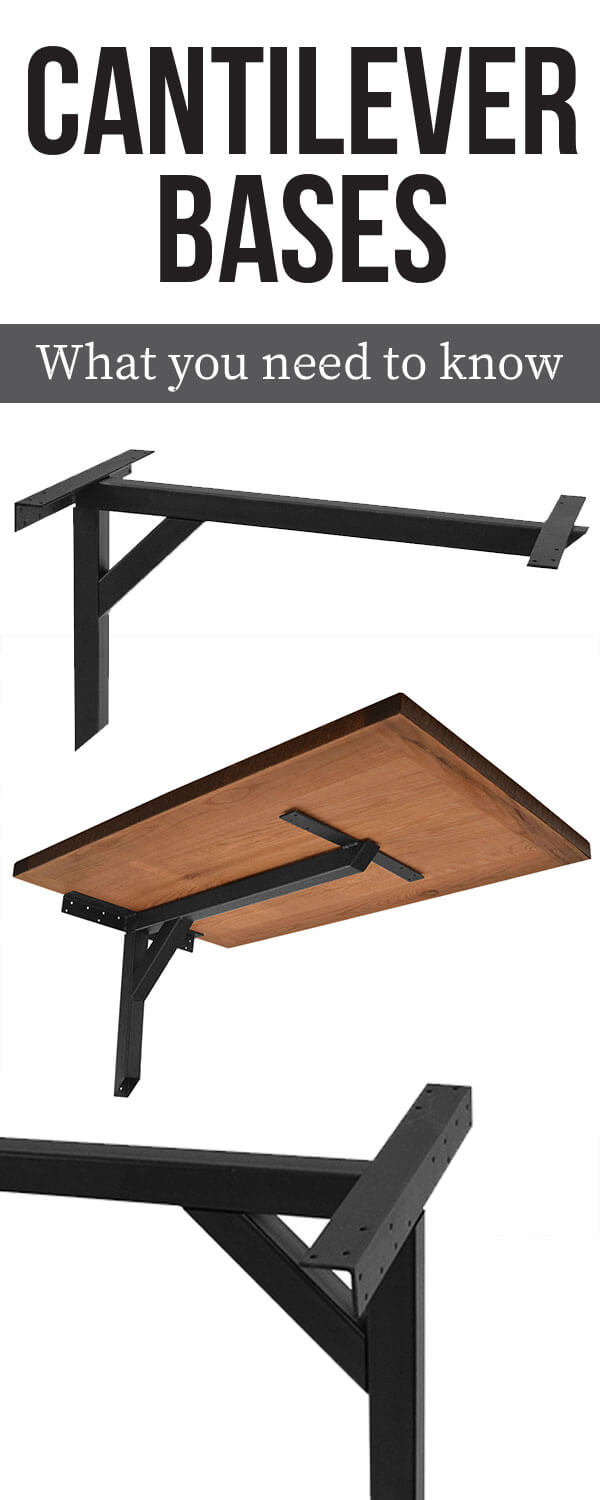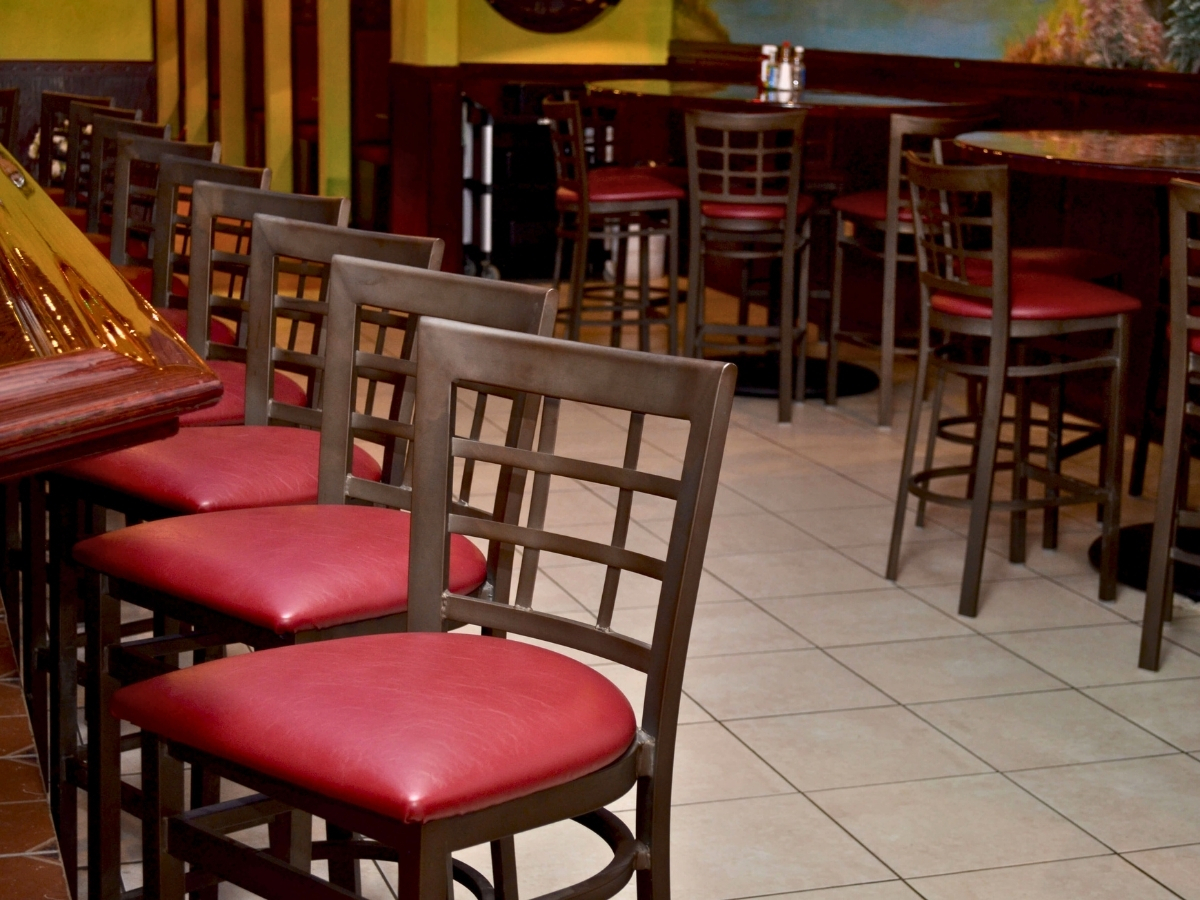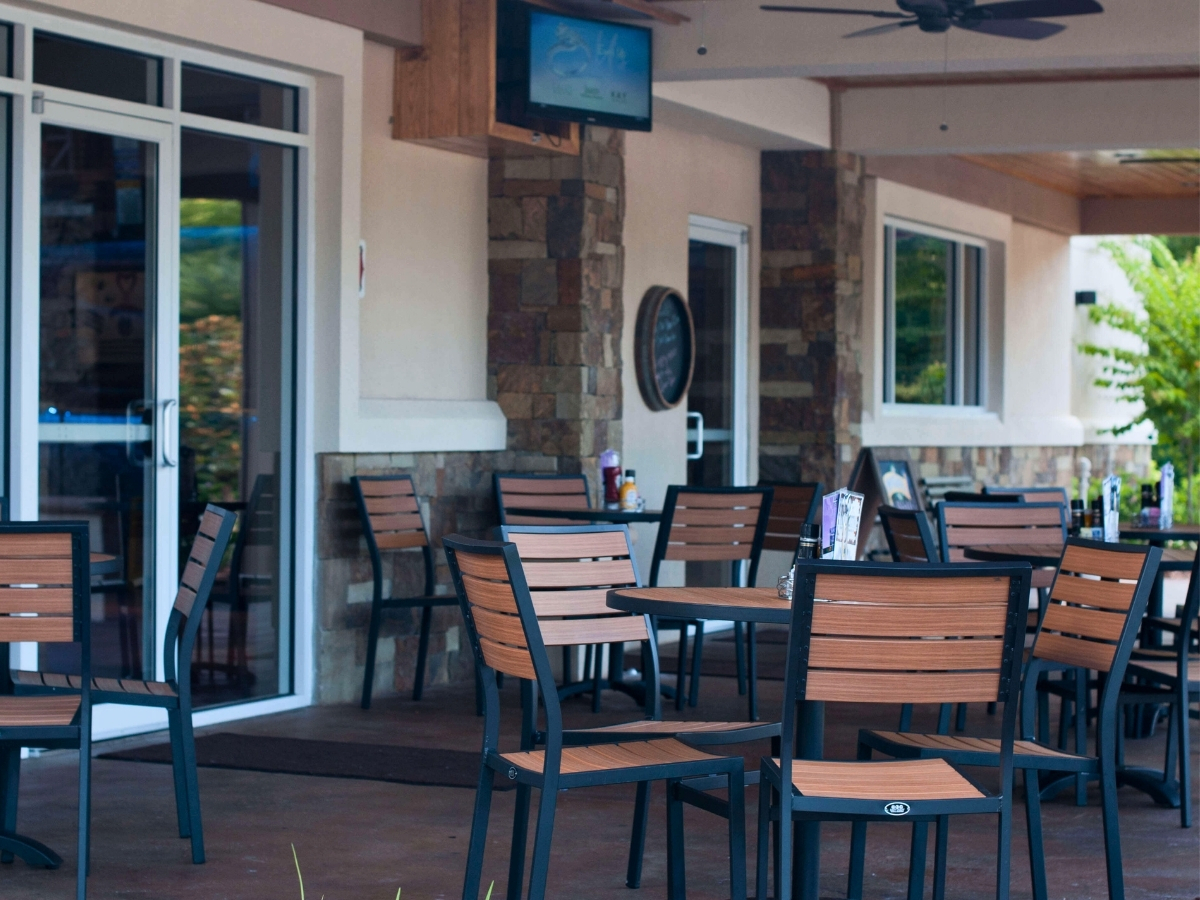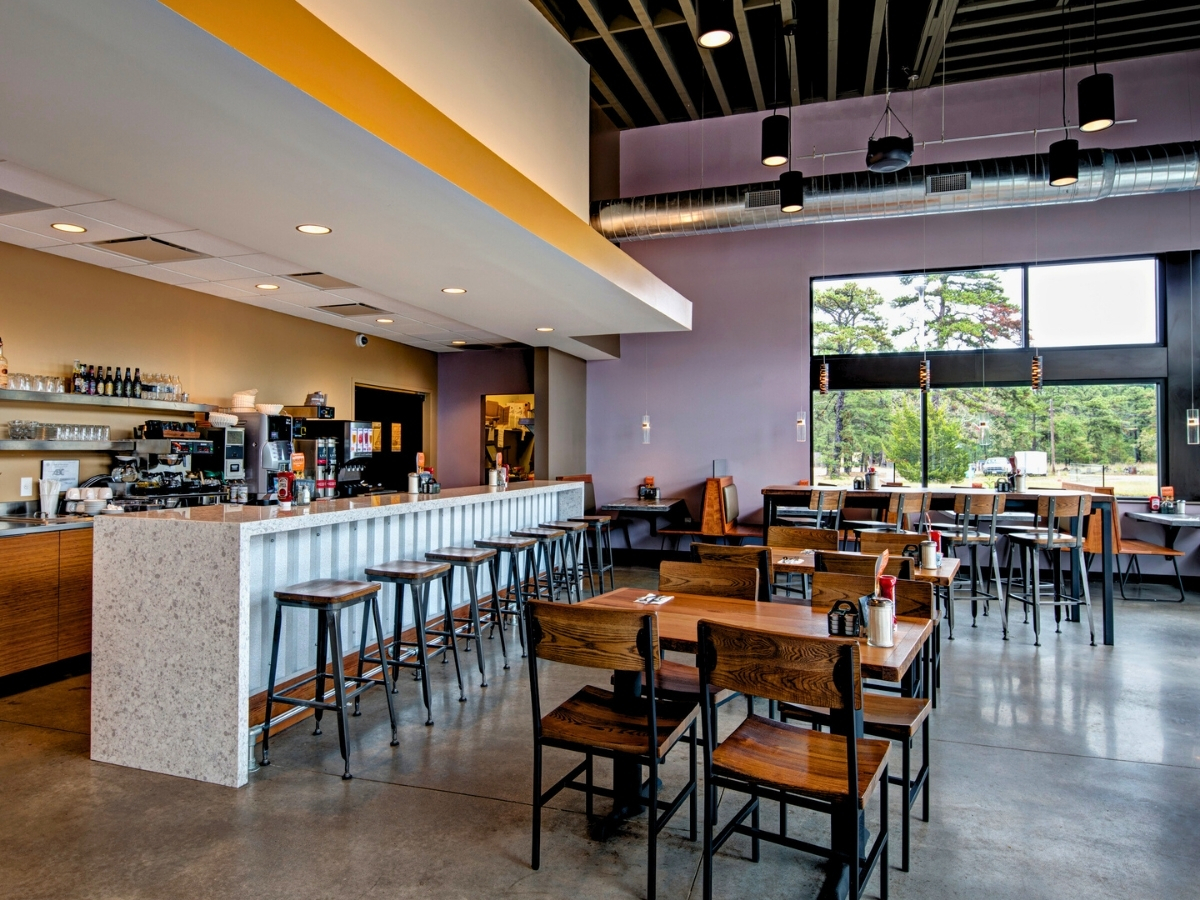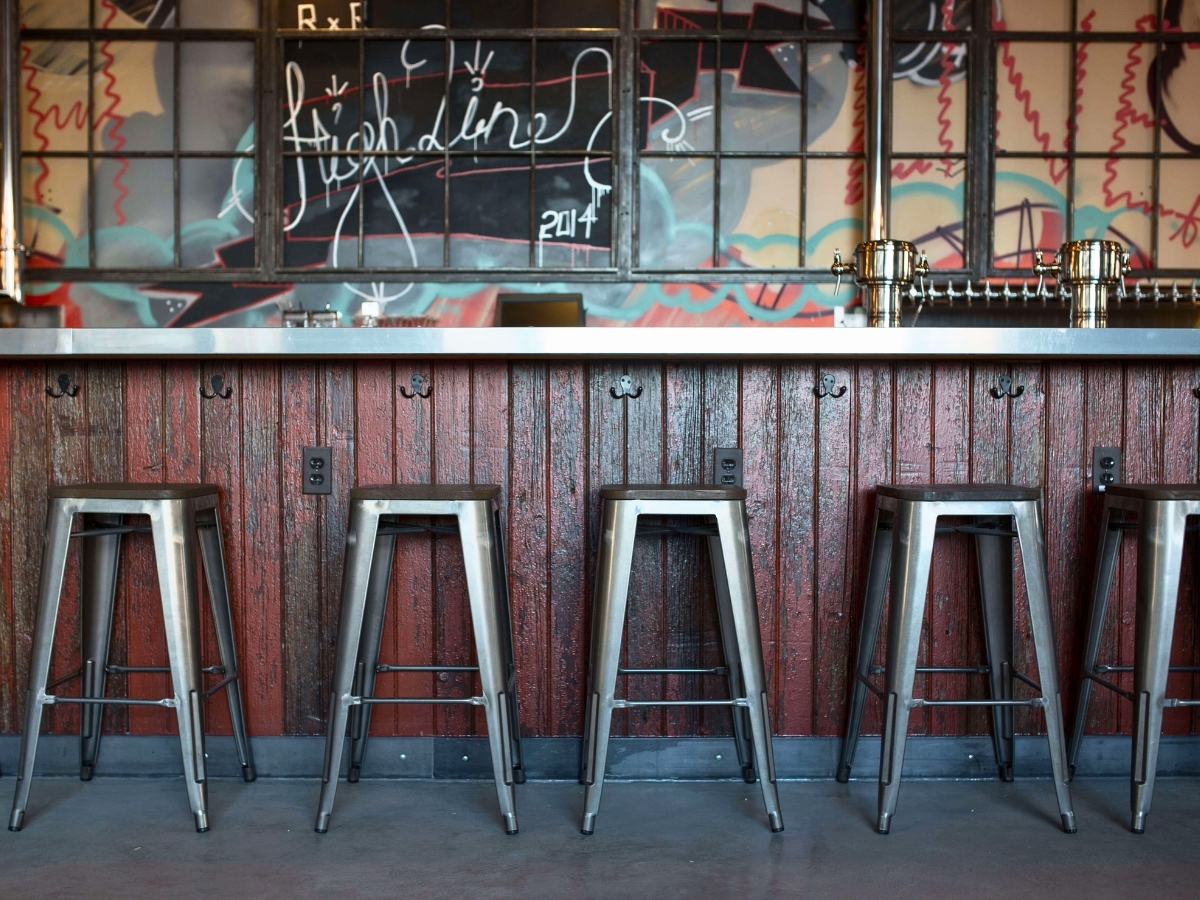Most restaurant furniture is relatively easy to install. You may need to attach a booth to the wall or screw a table base to the floor to prevent it from being moved around. But generally, adding furniture is a simple placement issue, rather than an installation issue.
Not so with cantilever table bases.
A cantilever is a horizontal bar that is only supported at one end. When a table is atop a cantilever base, there are no legs. Instead, the tabletop rests on the cantilever, which is attached to the wall. They are often used with booth seating, where guests are sliding in and out of the seat.
There are several reasons why you may want to consider cantilever bases for your restaurant, and a few why they may not be the best choice for you. Here are all the details!
The Benefits
Cleanliness
How annoying is it to get a vacuum or a mop under tables when they have four legs or a wide base? And how hard does your cleaning staff work to really get under there? If they’re like many, there may be an “out of sight, out of mind” mentality when it comes to cleanliness under your tables.
So if you had tables with no legs at all, wouldn’t it be easier to make sure there were no errant crumbs or sticky spills attracting bugs?
Cantilevered tables with no legs leave plenty of room for a broom, ensuring your staff can find every last Cheerio.
Comfort
No one likes a banged knee when they’re just trying to slide into their booth. Removing table legs from the equation keeps bruises at bay. And no one will be stuck in the unenviable position of having to sit with one leg on either side of the table support.
You can also seat more customers at a table when there are no legs to contend with, making the most of your restaurant real estate.
And since the table is securely attached to the wall instead of sitting on a potentially uneven floor, guests won’t have to deal with an unstable surface. No one likes when their fresh pint sloshes over onto their plate due to a wobbly table!
Appearance
A cantilever has a clean, modern appearance. It will bring a light airiness to your space, rather than the heavy weight of a table with large legs or a wide base.
It is especially fitting in a retro or mid-century modern style restaurant. The balancing act of cantilevered furniture first gained popularity in the 1930s, and stayed popular through the 1950s and 1960s.
Affordability
Cantilever bases are small — meaning they don’t use a great amount of material to build. So they are affordable. A good heavy-duty base will cost less than $85.00, with some variations depending on the finishes and weight of the steel.
But keep in mind that there will be installation costs for these bases…
The Installation
“This all sounds great!” you may be thinking. “I’m going to transition all of my tables to cantilevers!”
Well not so fast.
First of all, you can only use a cantilever where there is support for it. So it has to be against a wall. But because the base is attached to the wall instead of the floor, they require significant support if they’re going to hold up. If you try to attach a cantilever to a basic sheetrock wall, you’ll end up with a damaged wall and potentially injured customers!
Cantilevers are usually only used in new construction. With a new build, the contractors will be able to build in the appropriate support to make sure that your table holds. After all, think about how much weight the cantilever will have to hold: the tabletop, plates of food, handbags, elbows, and even small children!
A brick or masonry wall can be sufficient for holding up a cantilever table base. Your installer will need to use special brick or masonry screws that hold tight to the wall to make ensure the weight doesn’t rip it right out of the brick. But with proper installation, it will hold.
You can also attach cantilevers to a stud wall, but it has to be a load-bearing wall. A “curtain wall” will not be sturdy enough to hold up the table. And even once you’ve confirmed that your wall is load-bearing, you’ll probably need to add extra blocking between the studs. “Blocking” refers to adding small pieces of 2×4 lumber between wall studs to build out a solid surface. When done correctly, blocking can create a sturdy enough foundation for your table base.
This weight factor should also be considered when you’re purchasing your table base. Look for at least 18-gauge steel, and 2×2” tube steel, like our options at East Coast Chair and Barstool. Anything smaller could bend under the weight of the tabletop.
And make sure to always follow the manufacturer’s instructions. Your base will have a maximum tabletop size that is safe for use on your cantilever base. For longer tables, you may need a pin leg — a single leg that you’ll attach at the far end of the table for extra stability. It may seem to defeat the purpose to add a leg, but remember that you’re only adding one, and it will be centered at the end of the table. So it still won’t be in the way of customers’ legs, and staff will be able to clean around it.
Remodeling and retrofitting
So once your restaurant has been built, is it impossible to add cantilever table bases?
No. But you’ll have to open up your walls to verify that you have enough support for them. It can quickly turn into an expensive and time-consuming job. And you’ll have to close your restaurant while the work is completed.
Also, keep in mind that moving this type of table requires them to be removed and re-installed — opening the walls up again. So make sure you know exactly where you want them before you put them in!
Plus, if you rent your space rather than owning it, you may run into some push back from your landlord. You’ll have to abide by the terms of your lease when doing any remodeling work!
Conclusion
Cantilevered tables can make a great addition to your restaurant’s layout. They’re practical, attractive, and affordable. So if you’re just getting started on your restaurant construction, they’re definitely something to consider.
And if your restaurant is already built, just make sure to really consider the pros and cons before you start tearing your walls apart!


